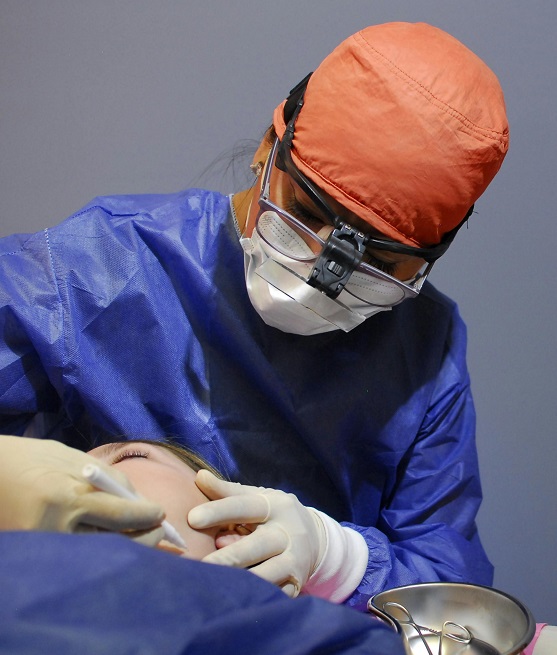What to Expect During Recovery from Adult’s Circumcision Surgery’s

Adult circumcision is a surgical procedure to remove the foreskin, which is the skin covering the tip of the penis. Recovery after adult circumcision surgery is done best with patience and knowledge of what to expect to make the process less challenging.
During adult circumcision
The surgery involves using general anesthesia or a local anesthetic. It takes less than 30 minutes and includes making a circular incision in the foreskin just below the head of the penis. The entire foreskin is removed, exposing the head of the penis. Dissolvable stitches are used to join the skin together, which will vanish within three weeks. Finally, a loose bandage is placed around the penis.
The First Few Days: Immediate Aftercare
● Rest: Your body needs time to heal after a circumcision, so be prepared for a few rest days. You may feel some discomfort, swelling, or bruising during the first two days. These are all very normal symptoms. Ice packs will be your best friend to help reduce any swelling and offer much-needed relief.
● Pain Management: Your surgeon will likely provide you with a prescription for pain medications or inform you as to which ones to take. Take the medicines as directed in order to alleviate discomfort.
● Bandaging and Hygiene: Initially, you will have a bandage over the area where the surgery has taken place. This should be kept clean and dry and changed according to the instructions provided by your surgeon. Hygiene is important, but avoid using harsh soaps or scrubbing the area. Gentle cleaning with mild soap and water works best.
First Week: Moving into the New Normal
● Activity Level: For the first week, avoid strenuous physical activity that might put strain on the surgical site. This includes avoiding heavy lifting or engaging in activities that may cause friction. One can walk, but not with any type of vigorous movement that might jolt and disrupt the healing process.
● Observe and Care: You can also expect to see some discharge or light bleeding for the first week which will eventually be reduced with time. If you find heavy bleeding, an abrupt increase in pain, or signs
of infection such as redness or unusual kinds of discharging, reach out to your healthcare professional right away.
● Swelling and Bruising: Swelling and bruising are common and expected and should gradually settle. Wearing loose-fitting underwear can help to keep the area comfortable and reduce friction. Follow any specific post-operative instructions that may be given by your surgeon, as they may have unique recommendations in your particular case.
Second Week: Healing and Adjustments
● Gradual Return to Routine: You should be starting to feel better by the second week. Remember, though, you still need to avoid strenuous activities and take your time getting back into a normal routine. Light activities and gentle stretching are usually accepted, just pay attention to your body and do not overexert yourself.
● Follow-Up Appointment: You probably will return to your surgeon for a follow-up visit to assess your progress in healing. This is a good opportunity to ask questions and get advice about resuming your normal activities, including sexual relations.
● Sexual Activity: Most surgeons recommend waiting a period of at least four to six weeks before engaging in any type of sexual activity. But, it can differ based on a person’s ability to heal or the recommendations of the surgeon. Other than that, just make sure to keep the area clean and be gentle with it while it heals.
The Longer Term: Full Recovery
● Skin Sensitivity: It is not unusual for changes in skin sensitivity while healing. This new skin exposure of the glans, or head of the penis, may be more sensitive than previously experienced. This may affect your sexual encounters initially. For the most part, this sensitivity corrects itself with time.
● Scar Formation: You will have some scarring, but over time, in most individuals, the scarring fades and becomes less noticeable. If it seems unusual or if you’re concerned about how your scar is looking, discuss this with your surgeon.
● Patience and Care: Recovery is gradual. Be patient, and follow any post-operative care instructions given to you. Everyone’s healing time is going to be a little different, but for most, by the end of the second month, they are usually back to normal without any real difficulties.
Important Points: What You Can Do to Help Your Recovery
➔ Stay Hydrated and Eat Well: Good nutrition and hydration support healing.
➔ Follow Instructions: These are direct from your surgeon, so follow the postoperative care instructions to the letter.
➔ Problems to watch for: You’ll want to watch for infection and complications in the healing process. If these or any other issues pop up, an advisor should be consulted.
➔ Avoid Irritants: Refrain from activities or using products that will irritate the healing area.
The Bottom Line
The Bottom Line:
Knowing what to expect and taking an active interest in post-operative care can provide an aiding hand to the recovery process of the body and give confidence to resume normal routine activities with ease.










